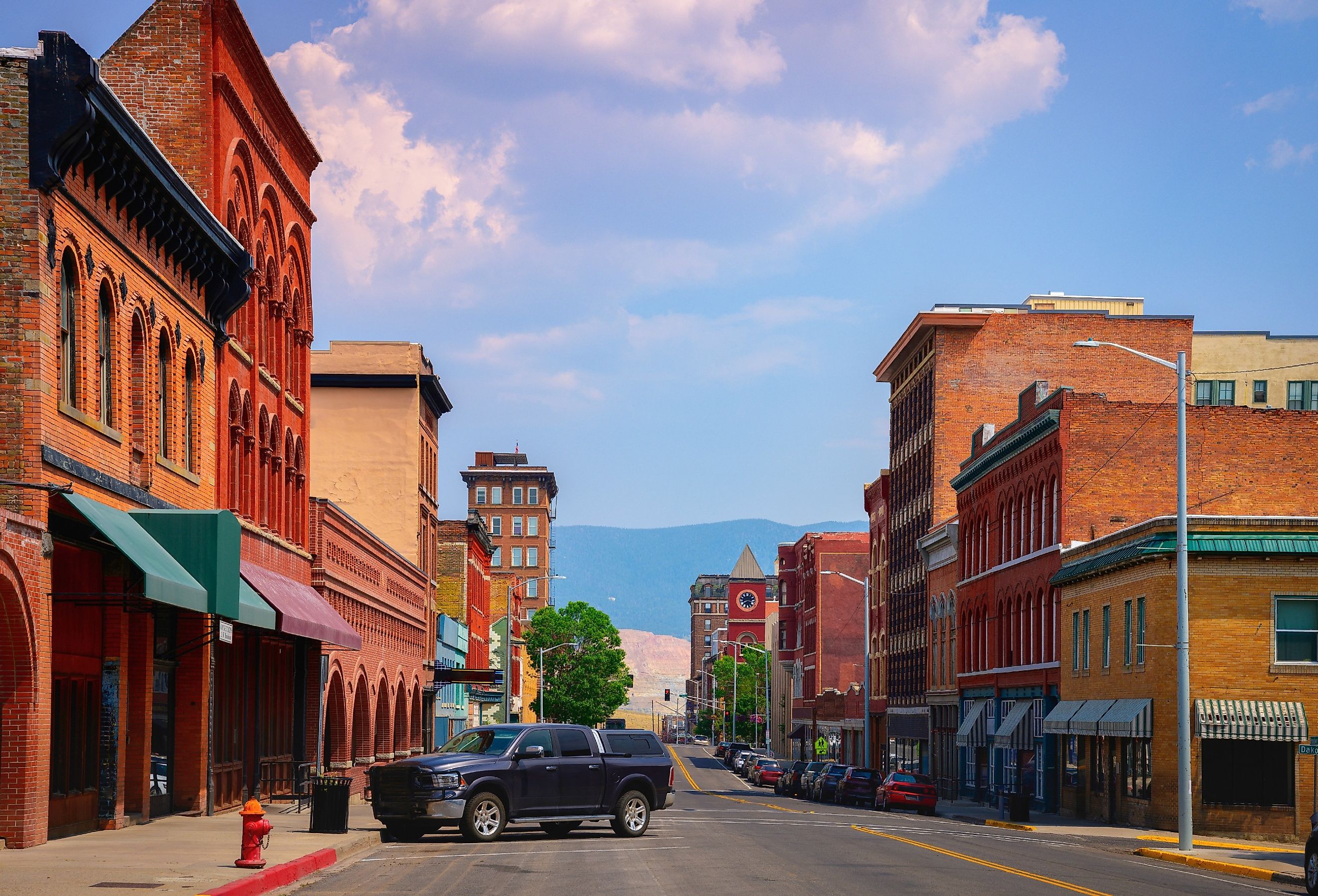
9 Old-World Towns to Visit in Montana
Montana is, no doubt, a state rich in nature’s wild beauty, where landscapes are stunning and adventures are abundant. For one, Yellowstone National Park is a beacon of untamed natural splendor, which makes for a tangible reason to visit this landlocked state. However, there is more to the Big Sky Country State beyond its vast landscapes of prairie, mountains, and badlands. The state boasts many towns where very little has changed since prehistoric times. These towns drenched in the past reflect the quintessential Old West and are alluring for visitors seeking old-world charms in a new world. From Fort Benton to Lewiston, find nine towns with plentiful historic landmarks in Montana to visit.
Helena
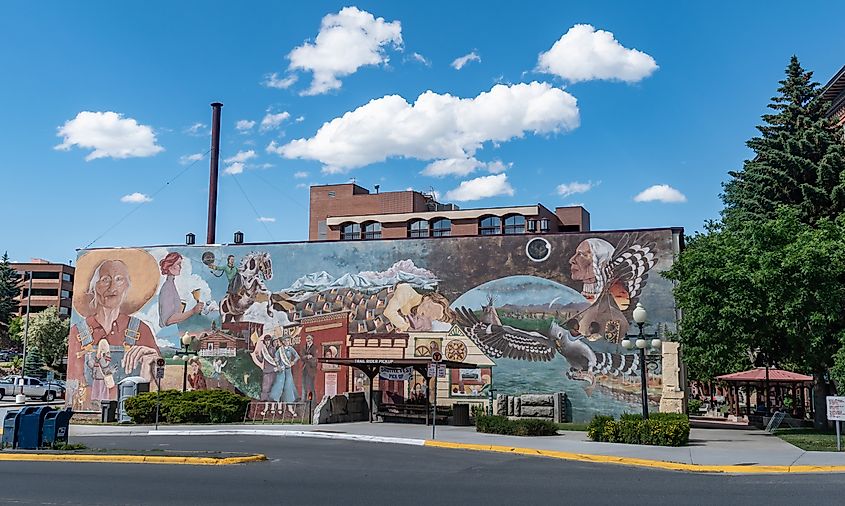
Helena, the state capital, was founded in 1864 as a gold mining camp and quickly became famous as people flocked in with dreams of wealth. By 1888, it had around 50 millionaires due to the gold boom, and today, much of its wealth and history reflects on its array of Victorian and Renaissance architecture. The Montana State Capitol, one of the town’s top landmarks, is a must-visit for every visitor. It was built between 1896 and 1902 and reflects the Neoclassical Renaissance architecture.
Next in line for old-world allures in Helena is the Original Governor’s Mansion, built in 1888 in the Queen Anne style. At the Montana Historical Society Museum in town, tourists can also learn about the state’s rich history and culture through local artifacts and Charles Russel’s art. For recreational pursuits like swimming, boating, fishing, hiking, and paddling, the 61-acre Spring Meadow Lake State Park is a great spot to visit. For travelers visiting with the family, enjoy a spin at the Great Northern Carousel.
Polson
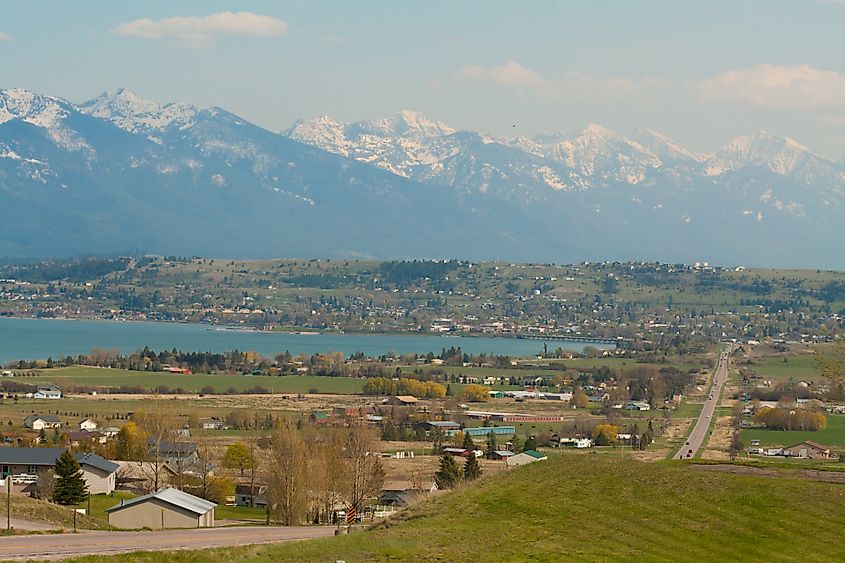
Polson is a naturally scenic town along Flathead Lake and in the Flathead Indian Reservation, which came to the limelight in the early 1880s when Harry Lambert established a trading post on the lake’s South shores. It was named in 1899 after David Polson, who began ranching in the area in 1884. On a visit here today, visitors can learn about the town’s history and even see the trading post set up by Lambert at the Polson-Flathead Lake Museum. The museum explores the town’s roots, including its pioneer days, through photography and artifacts.
Polson is also home to the Miracle of America Museum, the largest and most diversified museum in Montana, featuring everything from vintage motorcycles to military artifacts and outdoor sculptures, among others. Meanwhile, visitors can always head to Flathead Lake or the nearby Flathead River for fishing, boating, swimming, canoeing, and kayaking. Also, be sure to visit Richwine’s Burgersville to snack up after exploring.
Big Timber
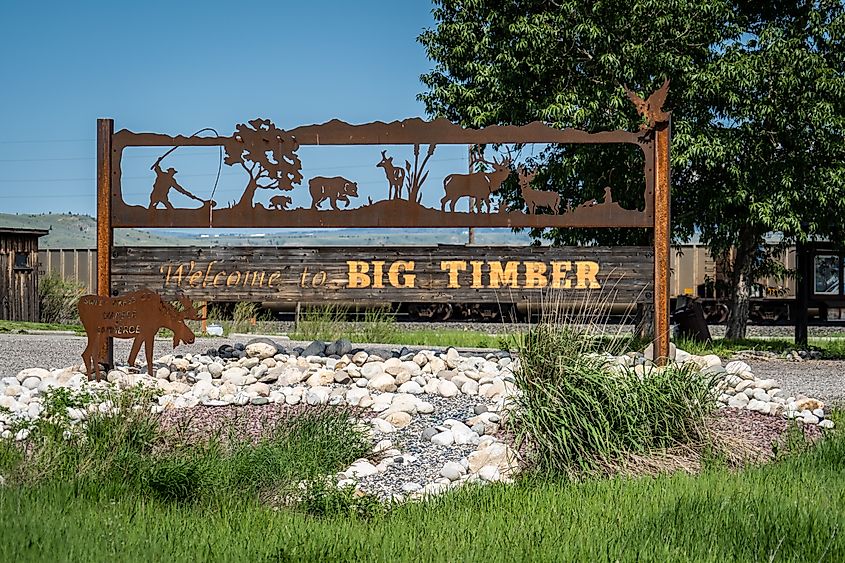
Big Timber in Sweet Grass County traces its roots to the 1800s when explorers led by William Clark first visited the area. William Clark then named the town after Big Timber Creek, and its first post office was established in 1880. The town also became a notable stop on the Northern Pacific Railway and as a wool-shipping hub. Thankfully, the town has not changed much, and the Crazy Mountain Museum now offers more insight into the life and times of the area’s early days through various exhibits and historical displays.
The Grand Hotel, built in 1890, is another reflection of Big Timber's history, and it is also the perfect place to lodge or dine when visiting. Art lovers can visit the Two Rivers Gallery or Hodges Fine Art Gallery, to delve into the town’s rich art heritage. In the meantime, the town is at the confluence of Boulder and Yellowstone Rivers, where watersports like fishing, boating, and canoeing are abundant.
Lewistown

Remarkably located in the Geographical Center of Montana, Lewistown began as a fort town in 1874. However, it was first settled in 1879 by some Metis families. The town became renowned during the gold rush of the 1880s and also became the eastern terminus of the Montana railway. Discover the area’s history and how it rose to prominence at the Central Montana Museum through various displays, photos, and exhibits.
Relish the town’s old-world vibes at the Reed’s Post Office, the first in the area that later became Lewiston. This post office was built in 1880 and is one of the town’s oldest buildings in an original homestead. Visit the Veteran’s Memorial Park next which honors veterans of the town, both past and present. Hit the outdoors afterward to float on Big Spring Creek or fish, boat, and canoe on Crystal Lake. Art fans can stop by the Lewiston Art Center to admire various sculptures, pottery, and paintings.
Butte

Butte is one of the larger towns in Montana with a rich history. Established as a mining camp in the 1860s, Due to the boom in copper mining at the time, it became Montana’s first major industrial city and the largest copper boom town in the American West by the late 19th and 20th centuries. Today, Butte still reflects old-world charms across various historical attractions. The Copper King Mansion is one such attraction in town worth visiting, as it was built in 1884 by William Clark, one of the city’s copper kings. Also, check out the historic Clark Chateau Museum and Gallery mansion built in 1898 for a copper baron.
Additionally, the town hosts the Mineral Museum and World Museum of Mining which both offer an immersion into the area’s copper mining days through various exhibits and displays. Away from the historical draws, Butte also features other iconic attractions like the 90-foot-tall statue of the Virgin Mary on a mountain along the Continental Divide. The Silver Bow Twin Drive-in Cinema is also a great point of interest in town, and visitors can enjoy a movie in an outdoor setting.
Hamilton
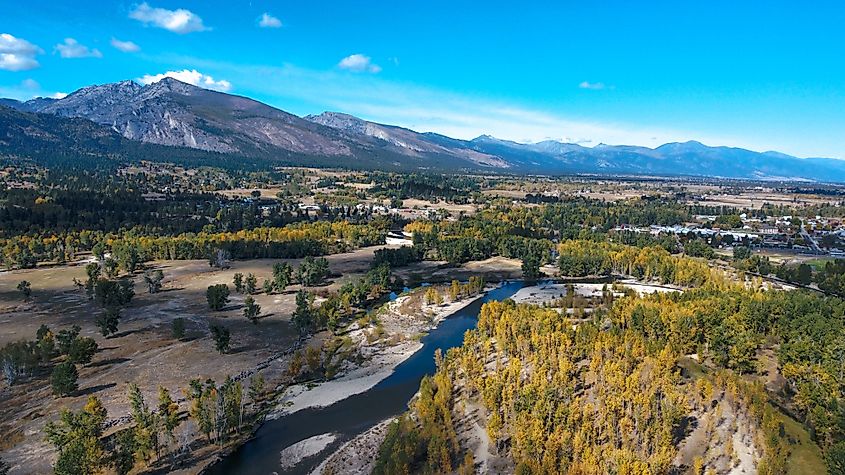
Hamilton’s history dates to 1890, when it was founded. Today, the town is soaked in historic vibes, especially with attractions like the 50-room Daly Mansion owned by the town’s founder, Marcus Daly. Visit this mansion and then storm out the Ravalli County Museum to appreciate the county’s historic and cultural heritage. Meanwhile, Hamilton sits deep in the Bitter Root Valley, which offers abundant recreational opportunities. So after a historic adventure, head to the 65-acre River Park by the Bitter Root River to fish, boat, and enjoy picnics with river views. If visiting on a weekend, stop by the Farmer’s Market to shop for fresh produce and local crafts.
Livingston
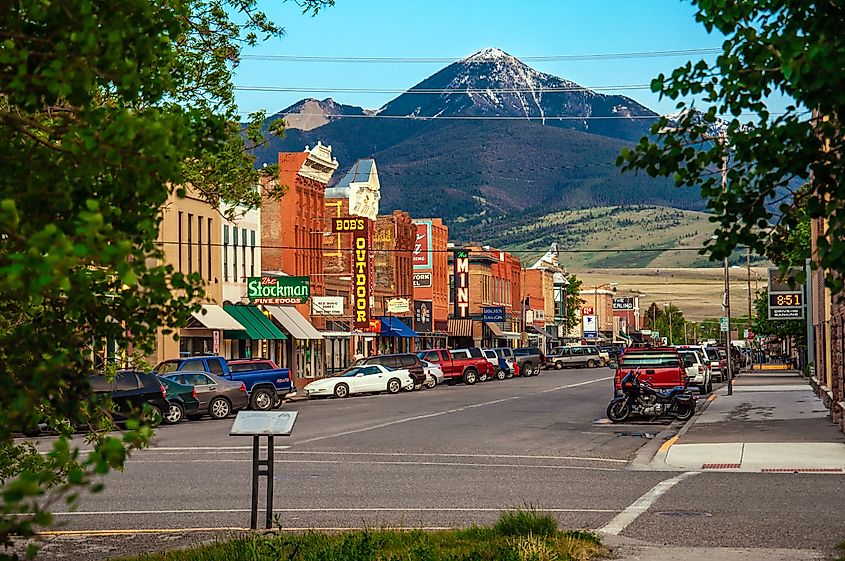
Livingston is a pretty small town along the Yellowstone River, north of Yellowstone National Park. It was founded in 1882 as a railroad town of the Northern Pacific Railway and became the first gateway town to the Yellowstone National Park. The 1902 Livingston Depot, a former train station, now serves as a reminder of the railroad industry that birthed the town. Elsewhere, the Yellowstone Gateway Museum preserves the town’s history as the first gateway to the national park.
The town is also home to Sacajawea Park, a historic park along the Lewis and Clark National Historic Trail where visitors can bask in scenic river views, fish, boat, and canoe on the Yellowstone River. A visit to the Yellowstone National Park to see the Old Faithful Geyser and other attractions is also recommended. And when it’s time to relax, head to Empire Twin Theatres to see a movie.
Miles City
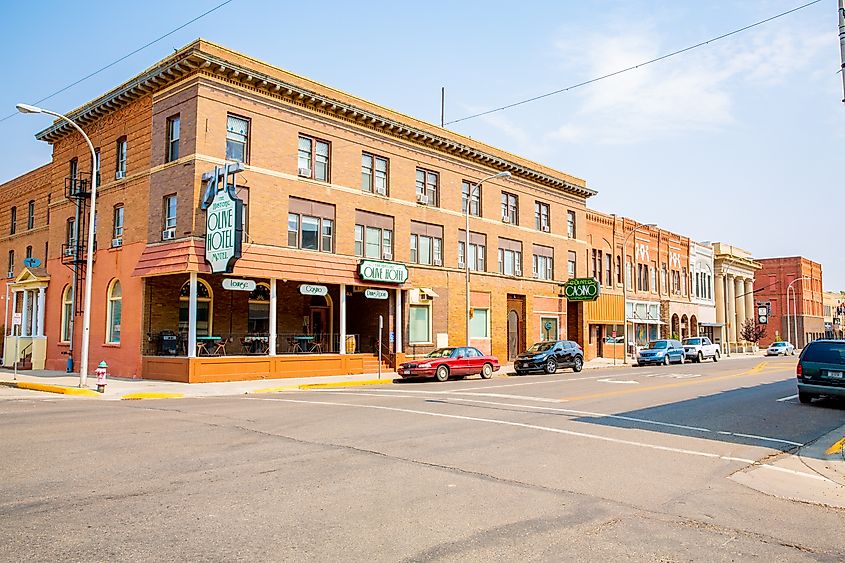
Miles City was established in 1876 around the Tongue River Cantonment for soldiers at the fort. A second fort was established two miles away, and the settlement was later moved to this new location. Today, Miles City preserves its early history at the Range Riders Museum, featuring exhibits of Colonel Miles, Native Americans, pioneers of the Great Plains, and more. WaterWorks Art Museum is another interesting historical attraction in town boasting an art museum, gallery, and studio in the town’s original waterworks facility by the Yellowstone River.
Just two miles north, visitors can fish, boat, float, or spot wildlife such as deer, and waterfowl at the Pirogue Island State Park. Before leaving, kick back and enjoy a thrilling movie later at the Montana Theatre.
Fort Benton

Fort Benton holds the reputation as the Birthplace of Montana and the oldest continually occupied settlement in the state. This small town along the Missouri River was established in 1846 as a fur trading post and commercial port. Today, it retains much of its old-world character along its waterfront, now designated a National Historic Landmark District. This district houses the site of Fort Benton with an 1856 block house, the Old Fort Benton Bridge built in 1888, and the Grand Union Hotel Built in 1882.
The town also hosts the Fort Benton Montana Museums and Heritage Complex, home to the Museum of Upper Missouri, Old Fort Benton, Museum of the Northern Great Plains, and Upper Missouri River Breaks Interpretive Center, among other historic establishments. These museums delve deep into the history of Fort Benton and Montana with numerous exhibits. After exploring the history, visitors are always invited to the Missouri River to boat, fish, kayak, and stroll around it before dining at the Grand Union Hotel restaurant.
The Old Wild West comes alive in landscape, cultures, and adventures across these small towns of Montana. Find quaint, historic architecture littered across the main streets of these towns, and learn the ways of pioneers across various museums. Beyond the natural grandeur of mountains, valleys, prairies, and rivers of Montana, these towns offer vibes of the old world that have refused to fizzle out, making them worth visiting year-round.











